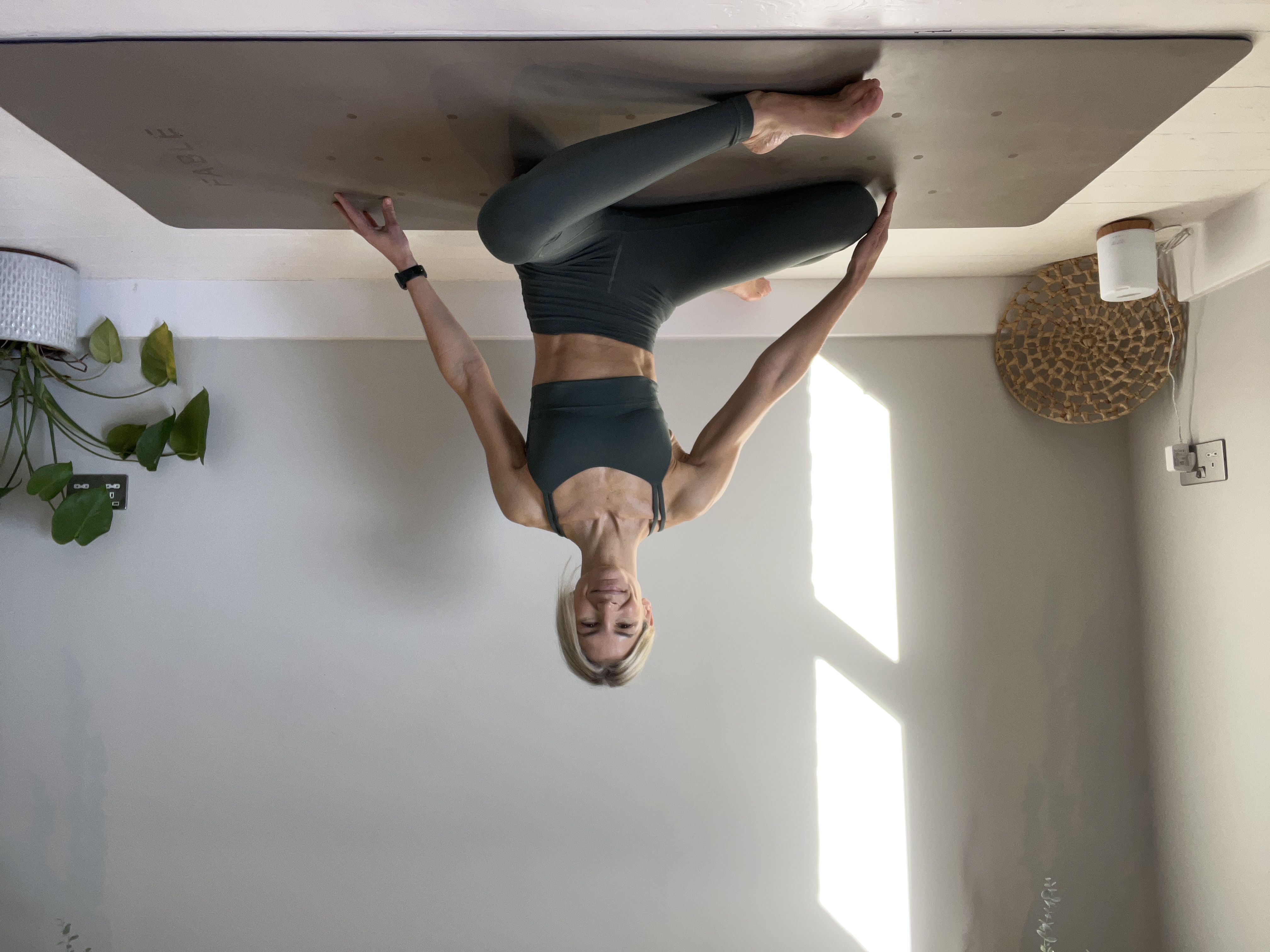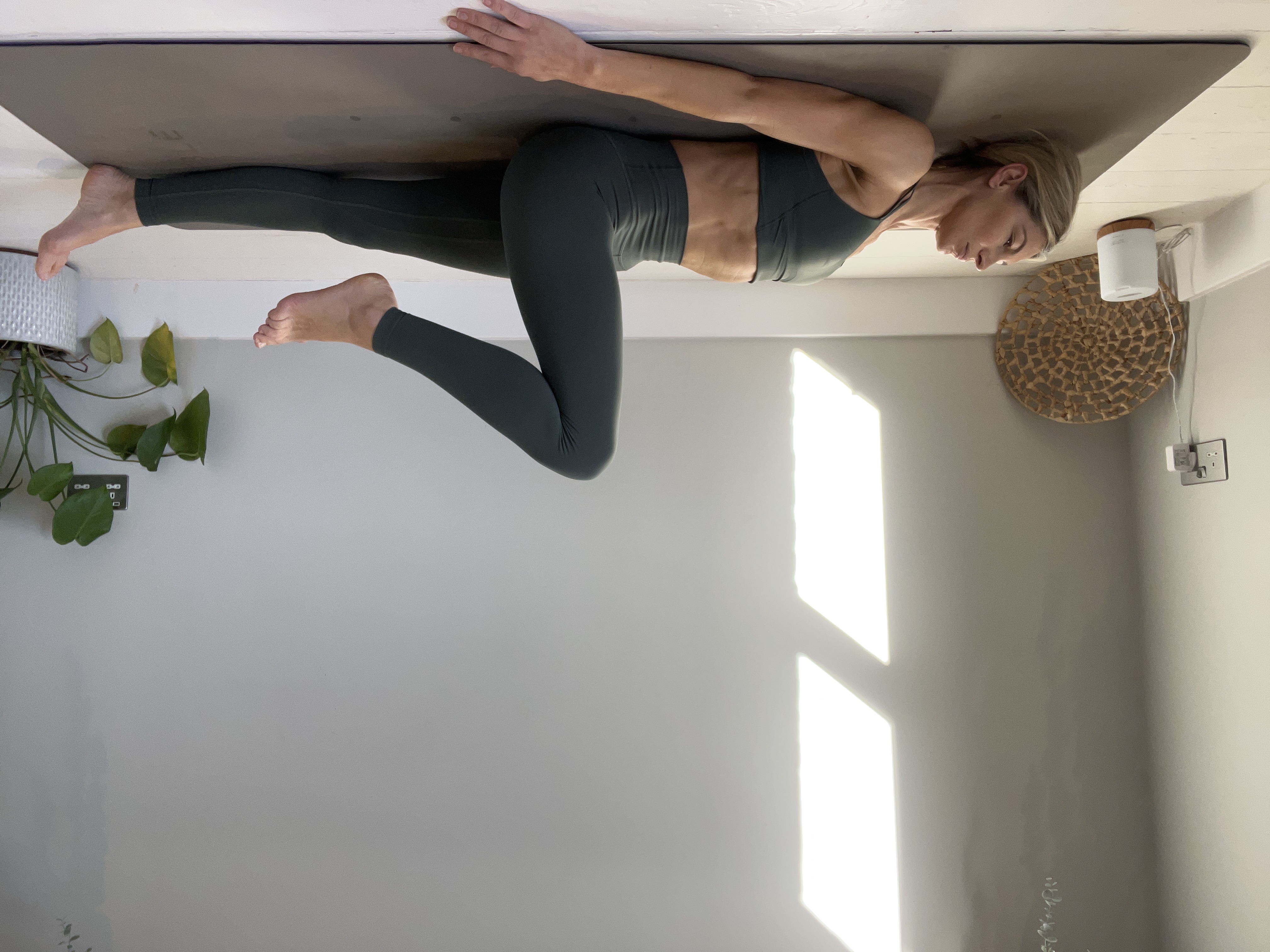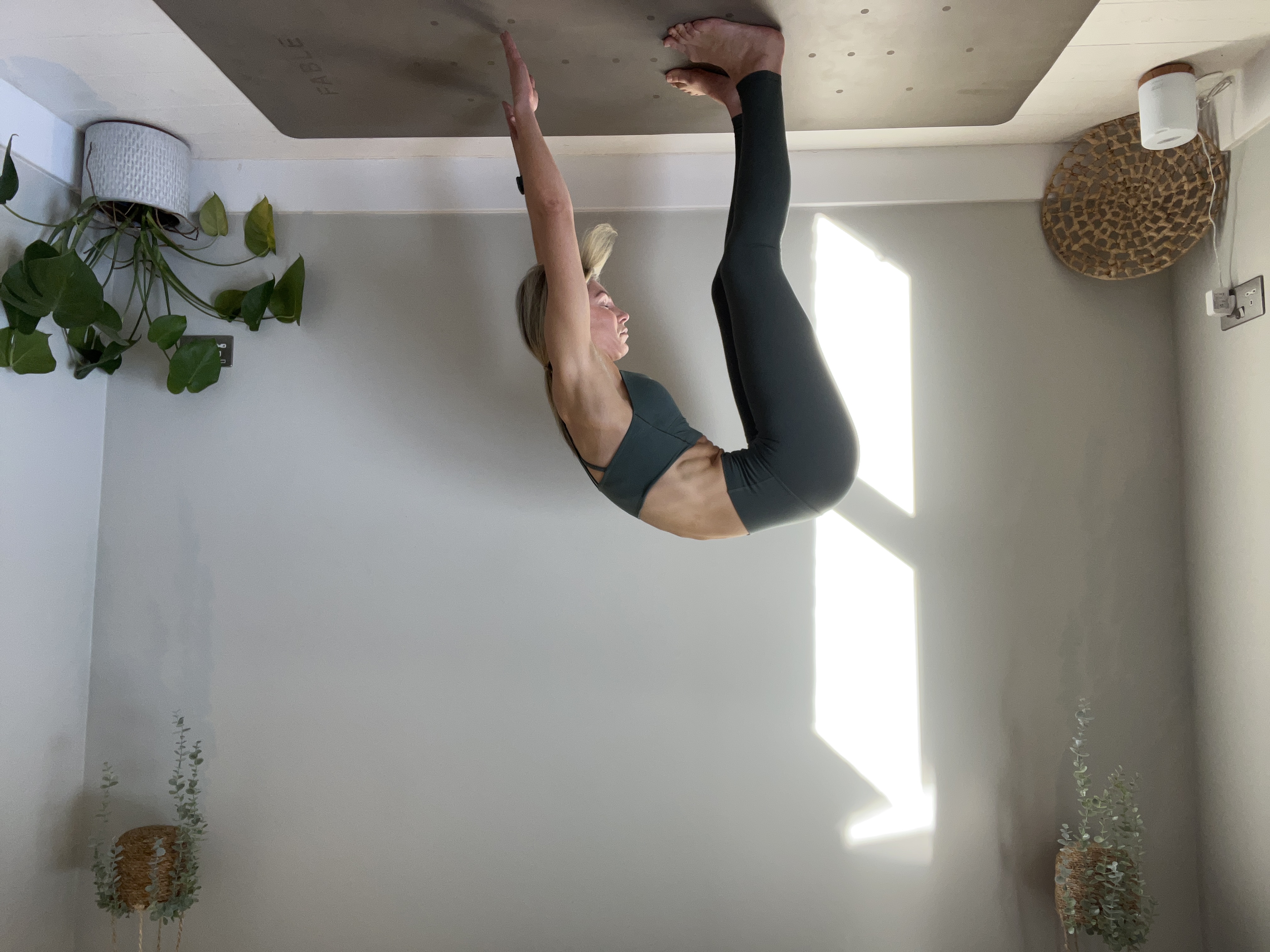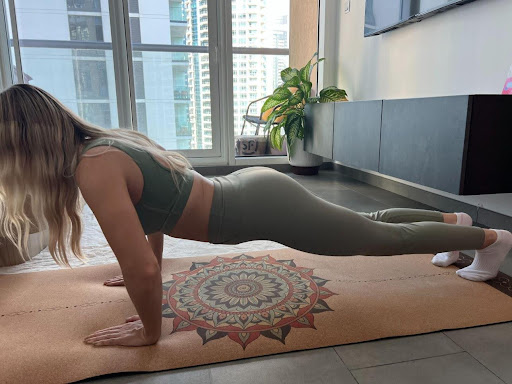Best workouts for busy mums to reduce stress and improve wellbeing
From Pilates and strength-building moves, these workouts are perfect to slot into your new routine


Juggling the demands of motherhood often leaves little room for something that will make you feel your best, like a workout, but exercise needn't be time-intensive, as you can do these expert-recommended workouts from home.
Finding the workout that's right for a busy mum, like yourself, will depend on your pre-baby workout routine – perhaps you were a die-hard HIIT workout fanatic and now you're looking into the logistics of running with a pram, or maybe you just want to switch off with no reps to count or form to watch using the viral TikTok 12-3-30 workout. And remember, fitness isn't just about your physical body – it's a chance to do something for yourself, whether it's a 15-minute workout in the front room while your baby naps or a regular run to help you reach your Couch to 5k goal. The mental health benefits of exercise after pregnancy have been well-documented too. According to a study published in the American Journal of Maternal/Child Nursing, women who returned to exercise postpartum were more likely to report a feeling of positive wellbeing, compared to those who didn't exercise after they had given birth.
Westfield Health physical wellbeing expert, Jon Booker, says that enjoyable exercise can be the perfect antidote to stress and anxiety. "The one thing I recommend for parents is a quick five-minute workout to get your heart pumping. You can do these at home and can pick from a range of different exercises. Whether you're into yoga, power walking, ab workouts, samba, or HIIT, you’ll be able to find something that you enjoy." Choose from the workouts below that have been hand-picked create a guide that resonates with the realities of motherhood.
Best for relieving stress
A common response to stress is shallow breathing but when you're relaxed, you tend to breathe slowly, allowing your diaphragm to move freely and using your lungs completely. Founder of the Transformative Movement Method, Vanessa Michielon, PhD, tells GoodtoKnow: "By learning how to consciously control your breath, slowing it down and deepening it, you have the opportunity to alter your entire physiology, communicate to your brain that you are safe and induce a relaxation response. Slow breathing with a focus on the diaphragm stimulates the Vagus Nerve, which activates the parasympathetic (rest and digest) state of your nervous system and helps counteract the stress response, shifting you into a calmer state."
Elongating the exhalation

Sit comfortably or lay on your back, and close your eyes if you wish. As you inhale, bring awareness to the flow of air entering your nostrils and filling your whole chest, all the way down the bottom of your lungs where your diaphragm is. On the exhalation, follow the reverse journey of the air leaving your lungs and exiting through your nose (or mouth if it helps in the beginning). As you keep on practicing, allow the breath out to become slower and lighter, taking as long as possible to fully empty your lungs, but making sure you are not forcing the action. For instance, if you are breathing in for 4 seconds, try and breathe out for 6.
Elongating the out-breath is one of the most powerful and effective techniques to manage stress, as every time you exhale there is a natural slowing down of your heart rate and a whole body relaxation response kicks in, so the longer you make your out-breath, the stronger this calming effect is.
Coherent breathing (Sama Vrtti)

This is a widely researched form of breathing originating in Ancient India, which involves taking long slow breaths, about five per minute, maintaining an even length during the inhalation and the exhalation.
Parenting advice, hot topics, best buys and family finance tips delivered straight to your inbox.
Find a comfortable position, laying on your back or sitting. To begin with, inhale through your nose for 4 counts and exhale for 4 counts. After a while, see if you can breathe in and out for 5 seconds and ultimately for 6. Of course, the length can vary based on your current lungs capacity and experience, so feel free to adapt it to a point that feels relatively comfortable, it shouldn’t generate more stress!You can also place one hand on the abdomen and one on the chest: with this tactile feedback it can be easier to allow the lowest part of the ribcage to move freely instead of trapping the breath in the upper chest.
Best for building strength
Strength training serves not only as a form of rehabilitation, but also contributes to the healing process of childbirth. It strengthens and safeguards our joints, enhances posture and improves balance when the proper form is used. Amanda Place, personal trainer and pre and postnatal exercise expert, says: "This workout routine can help you build stronger muscles, increase your range of motion, improve your posture and reduce the risk of injury. Each move should be completed for three sets but if you’re short on time, do one set of each to make it an eight-minute blast."
Squats
Squats are one of the most effective exercises for building lower body strength, specifically targeting the glutes, quadriceps, and hamstrings. Squats can improve your balance, stability and bone density and reduce the risk of osteoporosis.
- Stand with your feet shoulder-width apart, and lower your hips down and back, as if sitting in a chair.
- Keep your knees in line with your toes and your chest lifted, and then stand back up. Repeat for three sets of 10 reps.
Lunges
Lunges are another lower body exercise that can help improve strength and mobility. Lunges primarily target the glutes, quadriceps, and hamstrings, but also engage the core muscles for stability.
- Start in a standing position with your feet hip-width apart.
- Take a big step forward with one foot, bending both knees until your back knee nearly touches the ground.
- Push through the front foot to stand back up, and then repeat on the other side. Do three sets of 10 reps on each leg.
Deadlifts
Deadlifts are a full-body exercise that primarily targets the back muscles, glutes, and hamstrings. Additionally, deadlifts can improve grip strength and overall mobility.
- Stand with your feet hip-width apart and place a set of dumbbells in front of you.
- Bend your knees and hinge at the hips to lower down and grab the weight, keeping your back straight.
- Stand back up, lifting the weight with your legs and glutes, and then lower the weight back down to the ground. Repeat for three sets of 10 reps.
Overhead press
The overhead press works the deltoids (i.e., your shoulder muscles) and is great at building strength in this area. It also engages the triceps and upper back muscles, making it a great move to improve the ability to do functional tasks such as placing an object on a high shelf or lifting a heavy suitcase.
- Begin by standing with your feet shoulder-width apart, and the dumbbells resting on your upper chest.
- Keeping your core engaged, press the dumbbells overhead by extending your arms straight up.
- Slowly release by bringing the elbows out to a 90-degree angle and repeat for three sets of 10 reps.
Press ups
Press ups are a classic exercise that can build upper body strength, specifically targeting the chest, shoulders, and triceps. Additionally, push-ups engage the core muscles for stability and can improve overall upper body mobility.
- Start in a plank position with your hands shoulder-width apart and your feet hip-width apart.
- Lower your body down towards the ground by bending your elbows, keeping your body in a straight line, and then push back up to the starting position. Repeat for three sets of 10 reps.
Plank
Planks are a core exercise that can improve overall stability and posture and reduce the risk of back pain. Planks target the abdominals, back muscles, and shoulder muscles, helping to build overall core strength. For complete beginners, try our 30-day plank challenge to strengthen your core and tone up postpartum.
- Start in a push-up position with your hands shoulder-width apart and your feet hip-width apart.
- Hold your body in a straight line from your head to your heels, engaging your core muscles to keep your body stable. Repeat for three sets of 30 seconds.
Best for Pilates beginners
De-stress, increase your flexibility and soothe sore muscles with this Pilates workout from Gemma Folkard, Pilates Instructor and Founder of Shape Pilates.
Mermaid side stretch and rotations
- In a seated position, bring the legs into right angles, with the left knee in line with the left hip, externally rotate and the right leg behind, internally rotated.
- Start by taking a gentle rock back and forth to ease into the hips. Then allow the back hip to sink down into the mat whilst still maintaining a lengthened spine.
- Take a side bend over to the left, pressing into the right site bone and making sure the shoulders are away from the ears. Take 3-6 or these.
- Now take the side bend but this time rotate towards the mat and place your right hand down. Adjust your left hand as needed.
- Drag your chest through your arms into an extension, maybe coming up onto the finger tips. Don’t worry about your sit bones staying on the mat. Continue with this movement, which is very similar to cat/cow.
- Push the mat away to flex and imagine dragging it towards you to extend. Repeat around 6-8 times and then reverse out of it, spiralling the ribs back into the side bend and up to seated.
- Take a counter stretch the other way. Switch the legs and repeat.

Pilates instructor Gemma Folkard demonstrating the mermaid pose





Shoulder bridge



- Lie on your back, arms down by your sides, palms down. Your feet are parallel, slightly towards the bottom and around fist distance apart, and your neck is long and the chest open.
- Take a smooth breath in and feel the back and side of the body expand. On the exhale, start to curl the tailbone under and roll the hips up. Articulate the spine, bone by bone just until you hit the bottom of the shoulder blades. You should be in a long diagonal line, with the ribs just lower than the hips.
- Sweep the arms behind you to stretch and start to melt the spine back towards the mat, again bone by bone. Come back to the starting position and repeat 5-8 times, really focusing on the breath with the movement.
Leg circles

- Lying down on your back, extend your left leg (or keep it bent) and press your arms by your sides, palms down, chin up.
- Bring the right knee over the hip and relax the calf and foot so they are floppy. Circle the thigh bone as if you’re drawing circles on the ceiling, whilst keeping the other leg still and parallel.
- The aim is to isolate the right hip and massage into the joint. Circle one way slowly around 4 times and then reverse it. Repeat on the other side.
Roll downs



- Start standing with parallel feet about fist distance apart and soft knees. Take a moment to notice the weight through your feet and allow the shoulders to relax.
- Bring the arms to shoulder height, palms down, and start to dive up and over forwards. This is a spine stretch rather than a hamstring stretch, so soften the knees and try not the hinge from the hips.
- Instead, round the spine and keep the biceps in line with the ears. Stretch forwards pulling the abdominals back and the tailbone under.
- Recover back up, imagining the back of your hips pulling down towards your heels. Repeat this 3-6 times and on the last one allow yourself to hang, grabbing onto the elbows, swinging side to side, nodding the head and decompressing the spine. Take a moment for some smooth breaths in and out, before you slowing and gently roll back up.
Best for no equipment
For an all-round workout, we will do a variety of exercises to target both upper and lower body strength. Personal trainer and founder of The Wellness Primer, Ciana Glynn tells us: "As a beginner, you can start with bodyweight exercises and as you progress, feel free to add weights or a resistance band to make it more challenging."
Squats

- Stand with your feet shoulder-width apart. Feet straight or pointed slightly outward at a 90 degree angle, whichever is more comfortable.
- Tighten your abdominal muscles (work your core) as you lower your body, bending your hips and knees simultaneously (imagine you are sitting into an imaginary chair).
- Keep your chest up, head looking straight ahead, and don't let your knees extend beyond your toes.
- Go as low as you comfortably can, thighs parallel to the ground and rise back up slowly, pushing through your heels to start position. Maintain a neutral spine throughout the movement.
Lunges

- Stand with your feet hip-width apart and your hands on your hips, or I prefer to interlock my fingers with my hands position to help my form throughout exercise.
- Take a step forward with one foot, landing heel to the ground. Ensure that your front knee is directly above your ankle, your back knee hovering just above the ground.
- Lower your body by bending both knees until your back knee is almost touching the ground. Keep your back straight, engage your core and keep check that your front knee does not go over your toes. The back knee should be faced towards the ground without touching it.
- Push back off the front foot to return to the starting position. Bringing your feet back together, repeat the lunge on the opposite leg, alternating between legs.
Push ups



- Start in a plank position with your hands placed shoulder-width apart. Your wrists should be directly under your shoulders, and your body should form a straight line from head to toe.
- Engage your core muscles and continue to look straight ahead to maintain a stable position. Point your fingers forward or slightly turned out, whichever feels comfortable.
- Keep your elbows tight, bend elbows and lower your chest towards the ground. Keep your body in a straight line, lower until your chest is just above the ground or as far as you can go remaining in control of movement.
- Push back up through the palms of your hands, extending your elbows to return to the starting position, fully extending your arms without locking your elbows. Inhale as you lower your body, exhale as you push back up.
Tricep dips

- Sit on the edge of the table/ couch making a box shape with your body and feet, your hands tightly gripping to the edge with close grip to body, fingers pointing forward.
- Keep your feet flat on the ground, box shaped body with and knees bent roughly 90-degree angle.
- Lower your body by bending your elbows until they form a 90-degree angle. Push through your palms to extend your elbows and return to the starting position.
- Keep your back close to the table as you move, lifting yourself up and down working your triceps without letting shoulders shrug.
Russian twists

- Sit on the floor with your knees bent and feet flat on the ground.
- Lean back slightly, keeping your back straight, until you feel your core engage.
- Lock your fingers bringing your hands together in front of you, lift your feet slightly off the ground, keep your core engaged, and twist to one side.
- Bring your hands back to the centre without stopping and then twist to the opposite side.
- Repeat the twisting motion from side to side, hands interlocked and touch the mat either side to count as a rep.
Wall sit

- Similar to a squat, rest your back against the wall but make more of box shape in squat position as a nice way to finish off a workout.
- Give your personal best or try 60 seconds with 30 seconds rest between each round.

Amanda Place is a personal trainer and pre- and postnatal exercise expert. She has over a decade of experience in the fitness industry, including a Level 5 Diploma in Integrative Health and Nutrition Coaching, Level 3 Diploma in Gym Instructing and Personal Training and First Class Honours Degree in Kinesiology. Amanda is also the founder of Sculptrition – an online coaching platform that features a range of classes from Pilates and Yoga to HIIT and strength training, as well as on-demand postnatal workouts that are ideal for busy mums.

Gemma Folkard is Founder of Shape Pilates, an online platform which offers a calm yet invigorating space that motivates you to put yourself first. Routed in the principles of breath, precision, centering and flow, your body and mind will be completely grounded, yet energised, and for only £7.50 per month.

Vanessa is a Yoga and Dance Lecturer, certified Pilates and Barre coach and professional dancer, with more than 13 years of teaching experience and over 30 years of movement studies under her belt. Vanessa is also founder of the Transformative Movement Method, empowering people of all walks of life to embrace Yoga, Pilates and Dance to improve their physical health and achieve a balanced state of mind. More recently, she's created and curated her very own signature method drawing inspirations from yoga, Pilates, barre and somantic movement practices. This movement based way of working out not only fires up the muscles in your body, but also stimulates your mind and its wellbeing.

Continue reading

From building healthy family relationships to self-care tips for mums and parenting trends - Daniella also covers postnatal workouts and exercises for kids. After gaining a Print Journalism BA Hons degree and NCTJ Diploma in Journalism at Nottingham Trent University, Daniella started writing for Health & Wellbeing and co-hosted the Walk to Wellbeing podcast. She has also written for Stylist, Natural Health, The Sun UK and Fit & Well. In her free time, Daniella loves to travel, try out new fitness classes and cook for family and friends.


